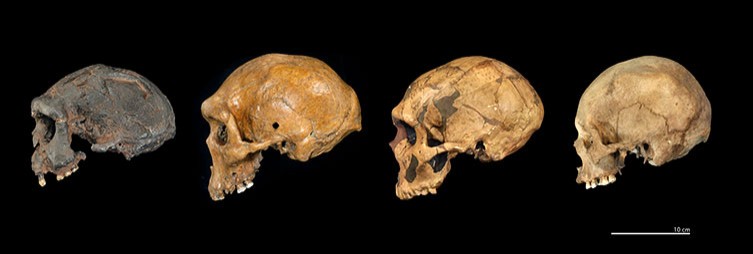Against “All the Missing Links are Still Missing”
This post is written against this page under the Chemistry tab on evolutionthelie.com
This piece of evidence uses writings of Charles Darwin to support the claim that the fossil record is imperfect and incomplete. This is further evidenced by the lack of unbroken lines of species that demonstrate that evolution occurred. What this post argues is that, essentially, a precise picture that shows evolution must exist in order for evolution to be irrefutably believed. Because, over a hundred years since Darwin, there are still immense gaps in the fossil record, this post suggests that those gaps cannot be filled and thus we must assume that evolution is an incorrect hypothesis.
Let me begin by saying there is a reason it is called the “Theory of Evolution,” because it is not an irrefutable truth. If we did have an unbroken lineage within the fossil record, posts such as this would be even more blasphemous than they already are. However, this source does not acknowledge those bits of the fossil record that demonstrate selection and evolution, even if they do not encompass all of human evolution.
Examination of the following skulls is an example of the kind of evidence that this post is blatantly disregarding.

Looking at the skulls, the left being the most ancient and the right being the skull of a modern human, it is obvious that there have been consistent trends over time that would suggest certain selection patterns. Though someone moving against evolution could argue that there is no proof that this lineage is “unbroken,” these trends remain consistent over time based on these fossils that we have. It would seem that over time brow ridges became less pronounced, faces became flatter, muscle attachment sites became less obvious, and craniums became rounder. All of these things can be explained by the change in diet, need for increased brain size, and optimization of the body for bipedalism. Because these traits were selected for in their preceding species, i.e. the Neanderthals with the rounder skulls reproduced more effectively, these traits continued to become more prominent and more obvious over time. Originally based in mutations, random variations in traits from genomic roots, each species was different from the last in the same ways that the species after it continued to be different. These trends seem undeniable and clear, even if we do not have a “missing link” that this post claims we must have.
“DNA Evolution is Impossible”
This post is written on this page under the Chemistry tab on evolutionthelie.com
First off, the title of the page in question is immensely misleading. What the post is arguing against, rather than the change in the genome over time, is the origin of DNA by random chance. The post appears to cite theological or extra-terrestrial origins as the beginning of DNA and thus the beginning of life on Earth.
Upon realizing the true nature of this post, and realizing it was not at all what I was expecting, I do have less of a problem with it than I did previously. I think that it is immensely unlikely that humans could have developed to be the way we are, that each of us individuals could exist in this massive universe, purely by random chance. It is undeniable, though, that we are here and that we are each unique organisms that are the product of millions of years of evolution and selection. What the initial cause of life on Earth is, whether it is random chance or some greater organized movement, seems to be beyond our potential understanding and is likely something each person should be able to personally speculate upon.
I do think, though, that it is incorrect to call the origination of the DNA molecule “DNA Evolution,” clearly demonstrating that the creator of this website has a fundamentally flawed picture in their mind of what evolution is and how it impacts individuals and populations.